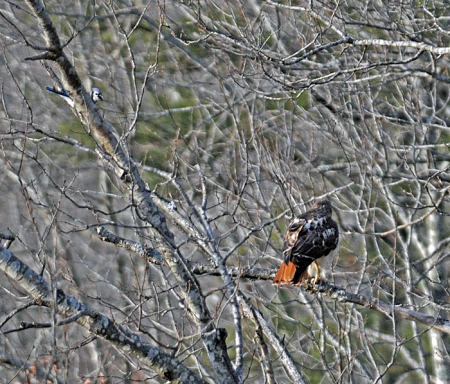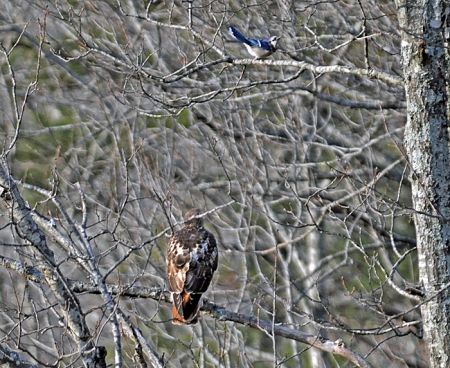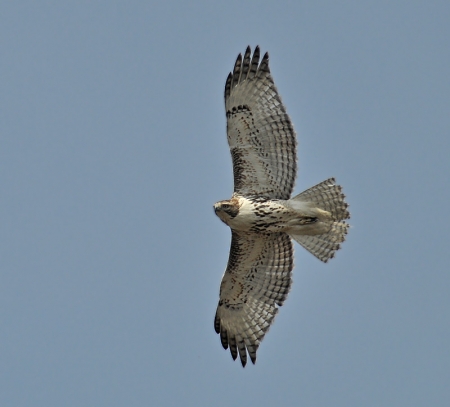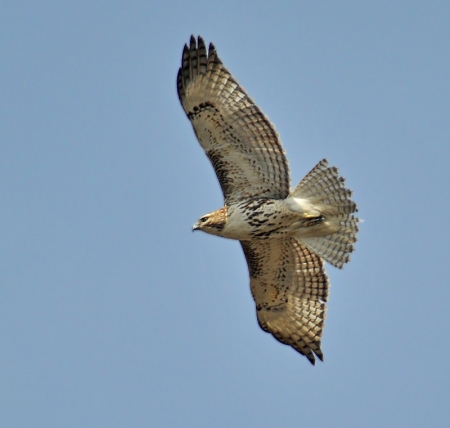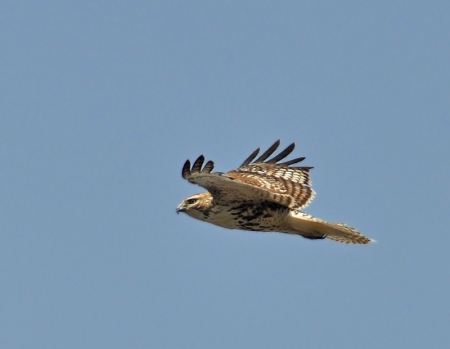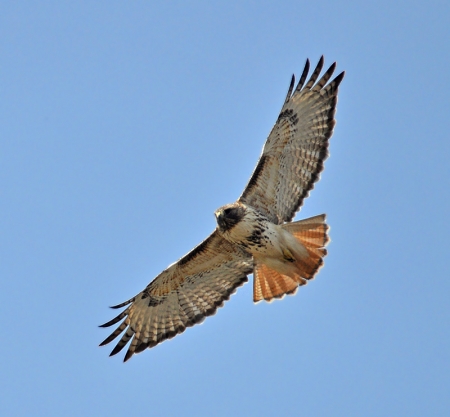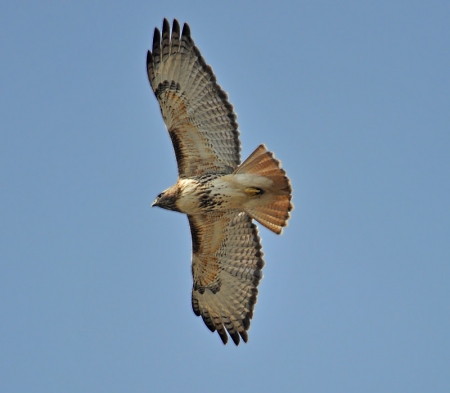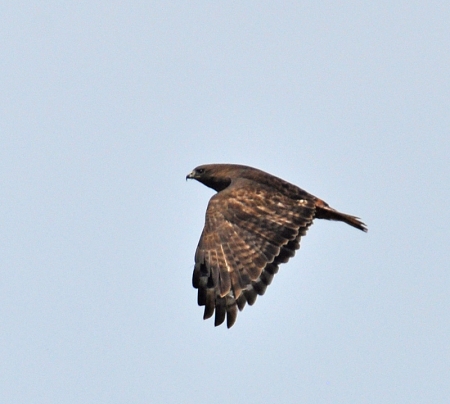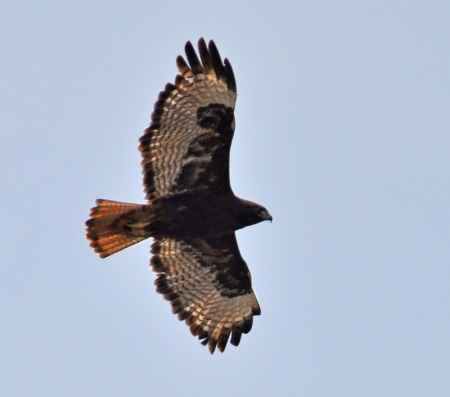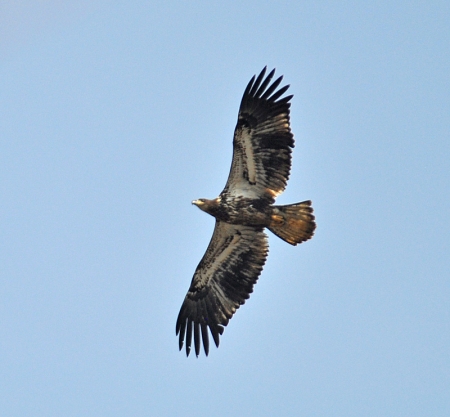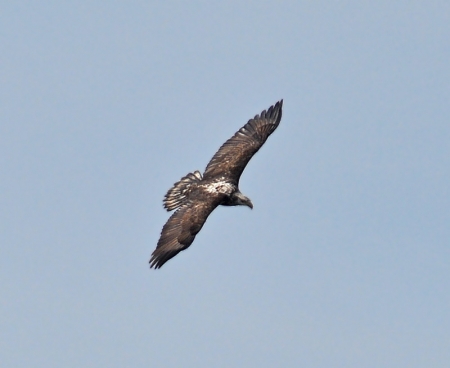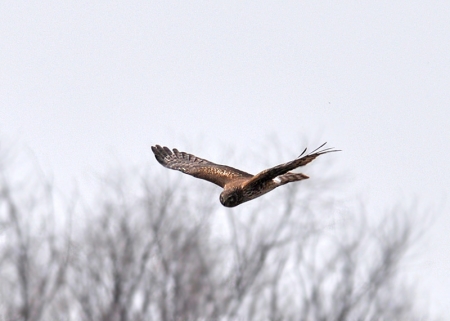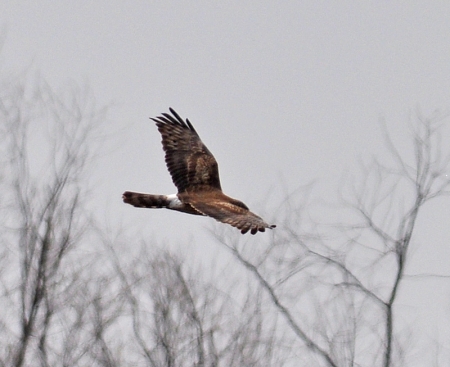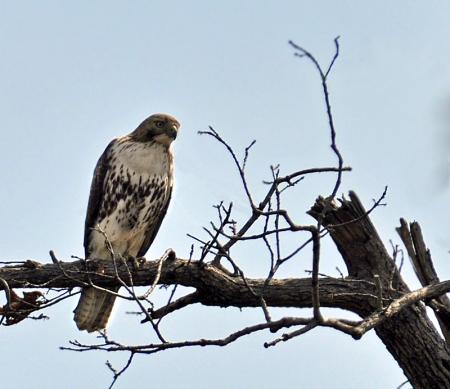Last Friday, finally, was a respite from this interminable winter, a ray of light in the perpetual gloom that March should have left with February. The promise of sunshine and warmth was irresistible; I knew I was getting out, it was just a matter of choosing a destination. I still had Snow Geese on my mind and there’s only one place nearby to find them on a consistent basis: Otter Slough Conservation Area. Even better, Dayna decided to come along — I wouldn’t have to drive, making it easier to concentrate on taking photos and I do kinda like having her around too.
Otter Slough is one of those areas that offers such a variety that you don’t know what to expect. Sure, there are large numbers of waterfowl — Snow Geese in particular — during the winter, but many days some other species unexpectedly takes center stage. There was a Loggerhead Shrike last February and a trip in July was highlighted by Great and Snowy Egrets and an unbelievable number of Dickcissels. Driving over, long before we reached Otter Slough, it became apparent that this was going to be a day for Red-tailed Hawks.
Along Highway 60, there was a Red-tail every couple of miles, most of them sitting on a power line, but the occasional one would be perched on something more attractive like a fence post or, even better, a dead tree. This one was in a dead snag right at the edge of the right-of-way, close enough that we turned around and “worked” him. Just like 99% of every Red-tail I’ve ever tried to photograph from a vehicle, he flew as soon as the car rolled to a stop. He didn’t go far before perching in a tree, but it didn’t take much to get out of range of a decent photo, even with a 500mm lens. These next two photos are pretty deep crops and I only included them because of the nifty interaction that they show.
After the hawk landed, I could see a smaller bird darting back and forth around him like a tiny, blue fighter jet. The Red-tail had gotten too close to a Blue Jay, who was doing his best to encourage the hawk to move along.
We watched for a few minutes, the Jay screaming his head off and the hawk doing his best to ignore him. They were still doing this when we pulled away. Blue Jays are tenacious and I suspect he won this battle of wills.
By the time we actually reached Otter Slough, we’d already seen more than 20 Red-tails along with the odd Kestrel or two. We saw at least that many more within the CA; in one instance, there were seven of them visible simultaneously, riding the thermals in lazy circles above us.
Red-tails can vary greatly in color, depending on subspecies (there are at least fourteen) and geographic area. Variations include Krider’s Hawk (very pale morph), light morph eastern, light morph western, dark morph eastern, dark morph western, rufous (intermediate) morph and Harlan’s Hawk (another dark morph but usually with a black-gray-white marbled tail). Harlan’s may well be a separate species — its status has changed multiple times since it was originally described as Buteo harlani. Currently, the American Ornithologist’s Union considers it a subspecies of the Red-tail (B. jamaicensis harlani) but notes that it is a “candidate for split, incipient.”
There were a few juveniles which can be distinguished by the banded, non-red tail and yellow eyes.
Almost all the adult birds were the lighter color phase common to the area, “light western morph” I think. Frankly, even after reading a dozen sources on Red-tail color variations, I’m a little confused about which morph is what color. And the fact that some of the sources contradict each other doesn’t help at all.
Then there was this bird:
Ok, he’s obviously a dark morph, but eastern? Western? Harlan’s? I did get this shot showing the tail and its brick-red coloring probably eliminates Harlan’s.
But one source says that Harlan’s can have a red tail and other features, such as wing length need to be considered to accurately distinguish a Harlan’s from a “true” Red-tail. I think I’ll just call this a “dark phase Red-tail” and leave it at that.
Red-tails weren’t the only raptors present. Other than the previously mentioned Kestrels (no photos, sorry) we saw three immature Bald Eagles and at least two Northern Harriers.
I believe those are two different birds in the photos, but I’ve lost track at this point.
One of the Harriers was fairly close when we first spotted him, close enough to have gotten a decent photo. Unfortunately, I was having a lot of trouble getting the camera to auto-focus on the bird and not the background and these are the best photos I managed. I obviously need work on my birds-in-flight technique.
These photos are good enough to show the white rump patch and the round, owl-like face but I had hoped for much better. You can also tell that this is not an adult male. They’re very gray colored making this either a female or immature. Very cool bird, regardless.
The Red-tails kept coming on the way home too. We’d long since lost accurate count and any on the way back could have been duplicates anyway. But I’d estimate we saw at least fifty of them.
By the time you add in the Eagles, Kestrels, Harriers and the large numbers of Turkey Vultures that we saw once we were back in the hills, the number of raptors was probably near or past a hundred. I think that qualifies as the “Day of the Raptors.”
Part 2 of the Otter Slough trip coming up and we finally get to the Snow Geese.
References:
Clark, W.S. 2009a. Extreme variation in the tails of Harlan’s Hawk.
Clark, W.S. 2009b Taxonomic status of Harlan’s Hawk.
Dunne, Pete, David Sibley, and Clay Sutton. Hawks in Flight: The Flight Identification of North American Migrant Raptors. Boston: Houghton Mifflin, 1988.
"Krider’s Red-tailed Hawk?". DyessCreek.com. Retrieved 25 March 2013.
Liguori, Jerry. 2004. Dark Red-tailed Hawks. Birding 36(5):501-6
Liguori, J., and B. Sullivan. 2010. Comparison of Harlan’s with Western and Eastern Red-tailed Hawks. Birding 42(2)2:30-37
Liguori, J., and B. Sullivan. 2010. A Study of Krider’s Red-tailed Hawk. Birding 42(2):38-45
National Geographic Society. 1999. Field guide to birds of North America. 3rd ed. National Geographic Society, Washington, DC.
"Red-tailed Hawk". All About Birds. Cornell University. Retrieved 25 March 2013.
"Red-tailed Hawk”. Avibase – The World Bird Database. Retrieved 26 March 2013.
"Red-tailed Hawk". Wikipedia. Wikimedia Foundation. Retrieved 25 March 2013.
"Red-tailed Hawk (Harlan’s)". Avibase – The World Bird Database. Retrieved 26 March 2013.
Sibley, D. A. 2000. The Sibley guide to birds. Alfred A. Knopf, New York.
Tallman, Dan. Red-tailed Hawk Identification. South Dakota Bird Notes 61(4): 86-91
